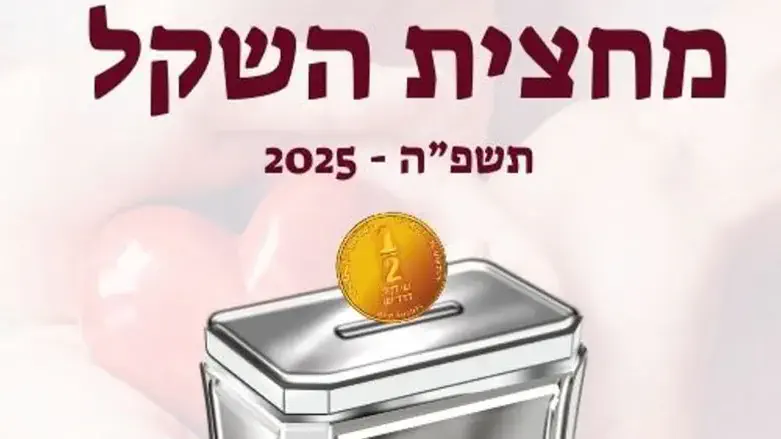
Parashat Ki Tissa opens with G-d’s commanding Moshe to take a census of the Children of Israel:
“Hashem spoke to Moshe, saying: When you take a census of the Children of Israel according to their numbers, each man shall give an atonement for his soul to Hashem… This is what they shall give…: a half-shekel of the holy shekel… Everyone who passes the mustering, from twenty years old and upward, shall give Hashem’s donation… It will be a memorial for the Children of Israel before Hashem, to atone for their souls” (Exodus 30:11-16).
These half-shekel taxes were collected year-by-year during the month of Adar, and then used, from the first of Nisan a few days later until the first of Nisan the following year, for the Tamid (twice-daily sacrifice) and the Musaf offerings (the additional sacrifices on Rosh Chodesh, Pesach, Shavuot, Rosh Hashanah, Yom Kippur and Sukkot) of that year (Tiferet Yisra’el to Mishnah Shekalim 1:1).
This is the reason that we read this same section two weeks ago as the Maftir: the Shabbat which either coincides with or immediately precedes Rosh Chodesh Adar is Shabbat Shekalim when, in memory of the half-shekel donation that once was, and looking forward to the half-shekel donation that will be again, we read this section in the same week that the Sanhedrin would begin to impose (and will again begin to impose) this tax.
This year, Shabbat Parashat Ki Tissa falls on Shushan Purim. And this compels the connexion between the half-shekel census and Purim.
The Talmud cites Reish Lakish (Rabbi Shimon ben Lakish): “It was known and revealed before He by Whose Word the world was created that Haman would one day weigh out the shekalim to annihilate Israel; therefore He placed their shekalim before [Haman’s] shekalim” (Megillah 13b).
This is a reference to Haman, the descendant of Amalek, who weighed out 10,000 silver talents to King Achashverosh to persuade him to proclaim the decree of genocide against all the Jews of his empire (Esther 3:8-9).
The Tosafot (Megillah 16a) observes that “10,000 silver talents are equivalent to half a shekel for every one of Israel, because there were 600,000 when they left Egypt”.
The Bach (Bayit Chadash, Talmudic commentary written by Yoel ben Shmuel Sirkis, 1561-1640) explains with a magnificent calculation:
“A talent is worth 60 manehs, and a maneh is worth 25 selas [the Talmudic equivalent of the Biblical Shekel]. Haman paid out 10,000 ordinary talents, which are equivalent to 5,000 holy shekels. Half a shekel for each of 600,000 Jews for one year equals one holy talent; a lifespan is 70 years , and one starts donating the half-shekel at 20 years of age to redeem one’s soul. Thus Haman gave the same amount that 600,000 Jews would donate in 50 years”.
Before Haman was even a glint in Amalek’s eye, we had already redeemed our souls, so to speak, with the 10,000 talents which we had donated, generation after generation, for the Mishkan and later for the Holy Temple.
Ever since the yearly cycle of Torah readings was standardised towards the end of the Second Temple era, and the fixed calendar as calculated by Hillel II (Hillel ben Yehudah, Nasi or head of the Sanhedrin) was adopted in 4119 (359 C.E.), Adar has been the month in which we conclude reading the Book of Exodus.
The final five Parashot of the Book of Exodus (Terumah, Tetzaveh, Ki Tissa, Vayak’hel, Pekkudei) deal almost exclusively with the building of the Mishkan (the Tabernacle). So the overarching theme of the Torah-readings for the month of Adar is the Mishkan.
This compels the question of what the connexion is between the month of Adar and the Mishkan.
We can deduce the answer from the Ramban:
“The subject of the Book of Exodus is the first exile, which had been explicitly decreed , and the redemption from it… Now, the exile was not ended until the day of their return to their place, and when they were restored to their forefathers’ level. When they left Egypt, even though they had left the house of slavery, they were still considered exiles, because they were ‘in a land not theirs’ , wandering through the desert. And when they came to Mount Sinai and built the Mishkan, and G-d restored His Divine Presence to their midst, then they were restored to their Forefathers’ level…and then they were considered redeemed. And therefore, this Book concludes with the completion of the Mishkan, and the Glory of Hashem filling it perpetually” (Introduction to the Book of Exodus).
According to the Ramban, then, the building of the Mishkan was the pinnacle of the redemption from Egypt. It was only when the Mishkan was complete, on the first of Nissan almost a year after the Exodus (Exodus 40:17) that we were truly redeemed, even though we had long since physically left Egypt and received the Torah.
The Mishkan, whose construction Moshe had overseen and which was completed in this week’s Parashah, was to serve the nation for the next 479 years. It was then replaced by the Holy Temple which King Solomon built in Jerusalem, 480 years after the Exodus (1 Kings 6:1).
The redemption from Egypt was complete the day that we erected the Mishkan in the desert. And since the redemption from Egypt was the paradigm for the final redemption, the final redemption which has started in these last few generations will be complete on the day that we will rebuild the third Holy Temple in Jerusalem.
On that day, when the Glory of Hashem will fill the Holy Temple, we will conclude the exile which began on that bleak summer’s day 1,955 years ago when the Roman legions destroyed the Second Temple.
On that happy day, we will complete the redemption and achieve the purpose of Creation – physical and spiritual perfection in this world.
